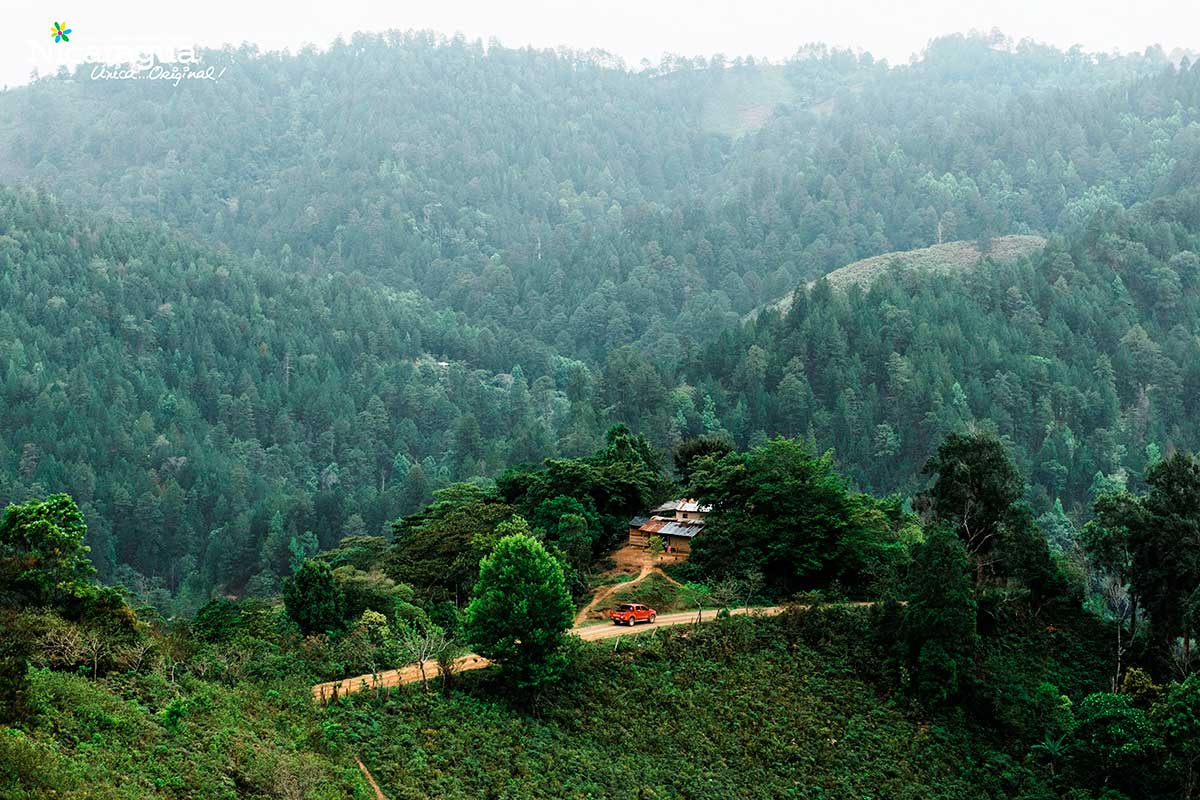With 24 volcanoes and countless lakes, rivers, and lagoons, Nicaragua is known as the “Land of Lakes and Volcanoes.”
Only in Nicaragua can you navigate through rivers and lakes from the Caribbean to the Pacific, because here the waters of the Río San Juan meet Lake Nicaragua. With a wide assortment of landscapes and habitats that allow for many different types of vegetation and animal species to flourish, Nicaragua is proud of its tremendous ecological diversity offering more than 70 unique eco-systems. In Nicaragua you will discover 7% of the world’s bio-diversity and learn why Nicaragua is considered “the second lung of the Americas.”
Ecological Regions
Today, although shrinking, there is still the presence of a rainforest that has been left relatively untouched in Nicaragua. The eastern region of the country is home to some of the bigger forests with two reserves that offer a wide variety of vegetation and animals: the Indio Maiz Biological Reserve, located in the southeast near the San Juan River, and the Bosawas Biosphere Reserve, located in the northeast.
The Pacific side of Nicaragua is quite unique from its eastern side presenting a different world, tropical dry forest. Here, many of the tropical plans and animals survive without the continuous abundance of water. Discover how the trees are the life of the forest, dropping their leaves in order to preserve the needed water supply for the entire forest.
Yet another unique forest to Nicaragua, which can be found at higher elevations, is the cloud forests. Clouds float among the mountain tops and volcano peaks, not only creating a breathtaking background, but also resulting in an exceptional type of vegetation. The humidity creates this area into an evergreen forest, where the tree leaves are always hung high and productivity rates soar allowing for a wide variety of flora and fauna to thrive in such a relatively small area. Isolated from the other areas within these cloud forests, the development of several fascinating, endemic species among the animals and plants has taken place. Such forests can be discovered at Mombacho Volcano and the Maderas Volcano. Located in the middle of Lake Nicaragua, the island of Ometepe houses two volcanoes, and is actually the world’s largest volcanic island inside a freshwater lake. One of nature’s most fascinating and beautiful spots, the island attracts more and more people every year. In 2010, Ometepe was named a UNESCO Biosphere Reserve because it demonstrates a balanced relationship between man and nature and is being developed in an eco-friendly way.

Nicaragua also has a number of other ecologically rich areas including swamps, waterways, lakes, lagoons and beaches. Migrating birds often visit these areas and large numbers, making Nicaragua the perfect spot for bird watching. Such prime spots include the swamps at Cosiguina Volcano, as well as the Rio Istián Estuary on Ometepe Island. Lake Nicaragua is the largest lake within Central America that not only houses the beautiful island of Ometepe, but also Solentiname, an archipelago of islands.
The Nicaraguan beaches are often a welcoming sight. Bordering two oceans, Nicaragua is a sun and sand destination. The Pacific side offers more hilled beaches and bays with unforgettable swimming, surfing and sunsets. The Caribbean coast is picture perfect with the classic turquoise sea, white sand beaches and perfectly placed palm trees, the ideal getaway.
With the multiple regions within Nicaragua comes the diversity of the animal species. Below is a short overview of some of the most prominent species living in Nicaragua:

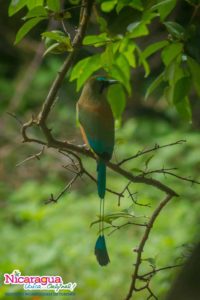



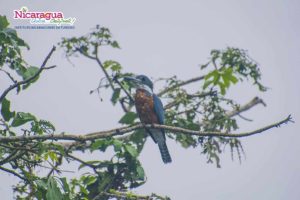



Due to the diverse ecological regions, a multitude of bird species can be found throughout Nicaragua. More than 700 species exist within the country; some permanently within the country while others are seasonal, escaping the winter blast. Though the countryside offers some of the better birding opportunities, such feathered friends as the hummingbirds and motmot can be spotted throughout the urban cities. With all shapes and sizes, Nicaragua is a birder watchers haven.




Known more for its smaller mammals, Nicaragua is home to a wide variety of mammals. Though the smaller mammals can be difficult to spot at times, common sightings include the Howler Monkey, sloths, ant-eaters and more. Desire something bigger, head to the sea to spot the largest mammals on earth – whales. The Pacific Coast of Nicaragua offers unforgettable glances of these large, elegant mammals migrating from north to south. During the dry season, a boat tour can often include observing these migrations.




With the abundant waterways, Nicaragua offers a wealth of sea life. Some of the most fascinating attractions include the underwater treasures of the reefs. The crystal clear waters of the Caribbean Sea offers rich, colorful reefs with some of the most spectacular underwater creatures gliding in and out. Keep an eye out for sharks, sting rays and barracudas. At one point the bull shark was the most famed resident of Lake Nicaragua. Though normally found in salt-water, here in Nicaragua they adapted to the fresh water after swimming up the San Juan River and expanding their area to the fresh water lake.
Another spectacular sight is the sea turtles. Though many turtle populations have decreased, many still take refuge in the Nicaraguan waters. Roughly between August and January, witness the nesting rituals on one of the many beaches within Nicaragua, as they lay their eggs in the sand. Certain beaches attract thousands of nesting turtles, climbing the sands to deposit their eggs. This nesting experience can only be topped by the hatching of the eggs, as the baby turtles are welcomed into this paradise and crawl to the ocean. An unforgettable experience!
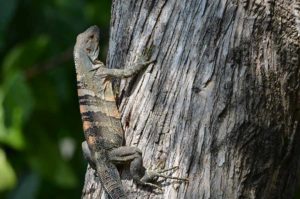
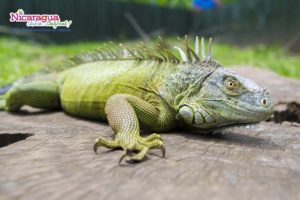


Nicaragua is crawling and with many four-legged friends. A variety of lizard species are among the most frequently spotted reptiles. The Green Iguanas can be found sunning throughout Nicaragua, on streets, rocks and rooftops. The Black Iguanas, though smaller in size, transform from green to brown as they age, a unique process. Asian House Geckos are commonly found in houses feeding on insects. With the ability to walk on walls and ceilings, they appear at night to hunt. Though little in size, their bark is worse than their bite as they are able to produce a loud, bird-like sound which may confuse travelers at first.
To find out more, click here.


